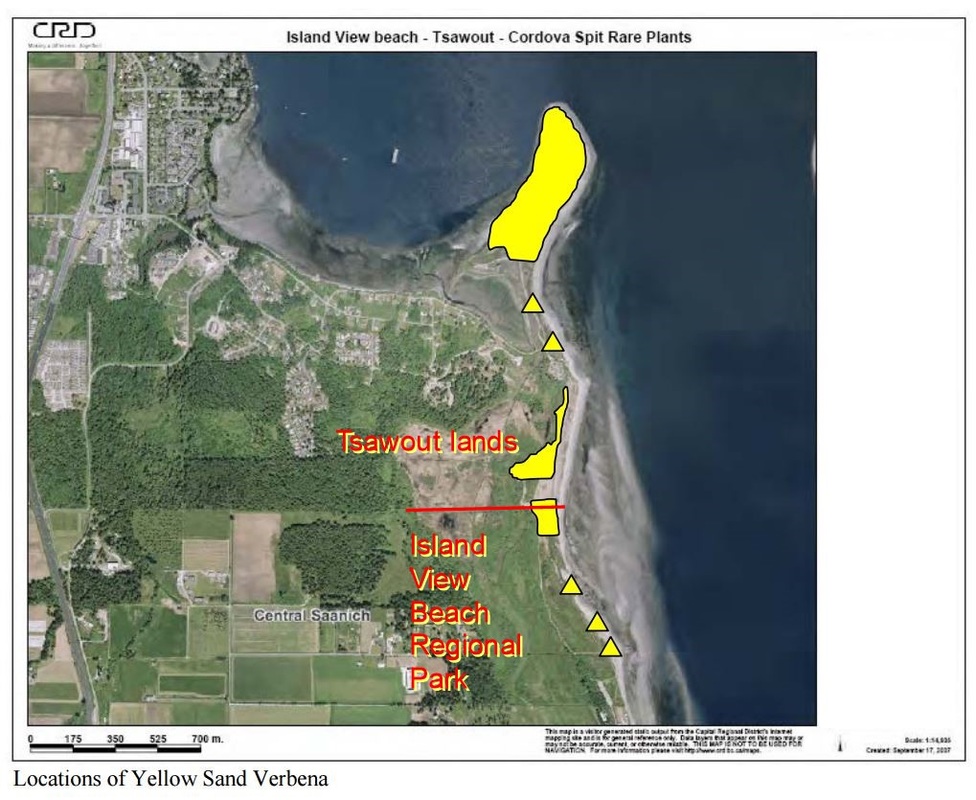Sand verbena moth
Sand-verbena Moth (Copablepharon fuscum) is a critically imperiled moth known to exist in only ten populations within a narrow range in the Strait of Georgia of British Columbia in Canada and the Puget Sound of Washington in the United States. Within its range, this moth depends on coastal habitat containing relatively large stands of its host plant, the yellow sand-verbena (Abronia latifolia). Yellow sand-verbena only grows near sea level, in sandy coastal areas that lack dense plant cover. Sand-verbena Moth depends on the yellow sand-verbena in all life stages except pupation. Adult moths feed on the nectar of the sand-verbena’s trumpet-shaped flower; adults lay eggs in its flowers; and larvae feed on its leaves and flowers. [From the Xerces Society see here ]
ThreatsThe host plant and therefore the moth are facing continuing declines due to on-going erosion and degradation of coastal dunes. [From Cosewic see here ]
The host plant, the yellow sand verbena is thriving in Island View Beach Regional park and needs no protection. As the host plant is secure, then no special protection is required for the sand verbena moth.''
Location
If the sand verbena moth exists in the park, then it can only be at the locations of its host, the yellow sand verbena plant. This is a one-way dependency - the yellow sand verbena can exist without the sand verbena moth, but the moth cannot exist without the yellow sand verbena. The map following then should only be used to show where the sand verbena moth will not be (the non-yellow areas). At this time we have no evidence the moth is in the park, but we accept that it is likely.
ThreatsThe host plant and therefore the moth are facing continuing declines due to on-going erosion and degradation of coastal dunes. [From Cosewic see here ]
The host plant, the yellow sand verbena is thriving in Island View Beach Regional park and needs no protection. As the host plant is secure, then no special protection is required for the sand verbena moth.''
Location
If the sand verbena moth exists in the park, then it can only be at the locations of its host, the yellow sand verbena plant. This is a one-way dependency - the yellow sand verbena can exist without the sand verbena moth, but the moth cannot exist without the yellow sand verbena. The map following then should only be used to show where the sand verbena moth will not be (the non-yellow areas). At this time we have no evidence the moth is in the park, but we accept that it is likely.
References
http://www.cosewic.gc.ca/eng/sct1/searchdetail_e.cfm?id=789&StartRow=181&boxStatus=All&boxTaxonomic=All&location=1&change=All&board=All&commonName=&scienceName=&returnFlag=0&Page=19
http://www.xerces.org/sand-verbena-moth/
http://publications.gc.ca/collections/Collection/CW69-14-363-2004E.pdf
